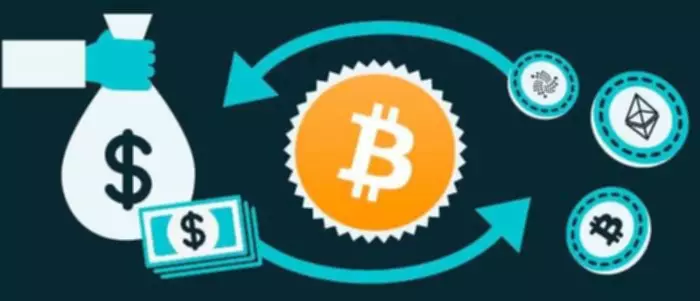Instead of expending computing vitality to unravel a puzzle, the nodes validating new transactions stake their very own value as collateral. These nodes then run effectively and actually to keep away from losing that collateral. The 32 Ether deposited as collateral should push validators to behave appropriately. But there are additionally punishments for validators who’re deemed lazy or malicious, together with the lack of up to their full deposit.
Proof-of-stake is a way to show that validators have put something of worth into the community that can be destroyed in the occasion that they act dishonestly. In Ethereum’s proof-of-stake, validators explicitly stake capital in the type of ETH into a wise contract on Ethereum. The validator is then responsible for checking that new blocks propagated over the network are legitimate and infrequently https://www.xcritical.com/ creating and propagating new blocks themselves. If they try to defraud the community (for instance by proposing a quantity of blocks after they should send one or sending conflicting attestations), some or all of their staked ETH could be destroyed. Bitcoin miners earn bitcoin by verifying transactions and blocks. However, they pay their operating expenses like electrical energy and rent with fiat forex.
These countries need the ability to maintain their companies operating and their houses warm. Since then, he has assisted over 100 companies in a wide range of domains, together with e-commerce, blockchain, cybersecurity, on-line advertising, and a lot more. In his free time, he likes taking part in video games on his Xbox and scrolling through Quora. Proof of stake is a type of consensus mechanism that differs from the traditional proof-of-work one.
What’s Finality?
The canonical chain is then decided by a fork-choice rule that selects the set of blocks which have had probably the most work carried out to mine them. Proof-of-stake is a mechanism used to confirm blockchain transactions. It differs from proof-of-work significantly, primarily in the fact that it incentivizes trustworthy habits by rewarding those that put their crypto up as collateral for a chance to earn extra. Proof-of-Stake is a consensus mechanism where cryptocurrency validators share the duty of validating transactions. A validator checks transactions, verifies exercise, votes on outcomes, and maintains records.
On proof-of-stake Ethereum, this is managed using “checkpoint” blocks. Validators vote for pairs of checkpoints that it considers to be valid. If a pair of checkpoints attracts votes representing a minimum of two-thirds of the total staked ETH, the checkpoints are upgraded. The earlier of the 2 is already justified as a outcome of it was the “target” within the previous epoch.
What’s Ethereum Proof Of Stake (pos)? In-depth Guide
With Hord, ETH holders have a unique opportunity to take part in staking whereas maintaining liquidity and maximizing their rewards. Ethereum’s transition to POS included many advantages for the community. These benefits include enhanced vitality effectivity, improved safety by way of financial incentives, better scalability, and a lowered environmental footprint. Validators should guarantee their validator node is consistently online and reliable.

Resistance to this type of assault is essential for a decentralized blockchain and permits miners and validators to be rewarded equally based mostly on sources put in. Proof-of-work and proof-of-stake shield in opposition to this by making users expend lots of energy or put up plenty of collateral. Under Ethereum’s PoS, if a 51% assault occurred, the sincere validators within the community may vote to ignore the altered blockchain and burn the offender(s) staked ETH. This incentivizes validators to behave in good religion to benefit the cryptocurrency and the community.
Major crypto exchanges, together with Coinbase Global (COIN.O) and Binance, have said they’ll pause ether deposits and withdrawals through the merge. Users won’t must do something with their funds or digital wallets as a part of the improve, they are saying. One of the world’s biggest blockchains is testing a model new way to approve transactions. The transfer has been a few years within the making but doesn’t come without risks. When a validator is down, they can’t participate in the consensus course of. Since this is detrimental to the overall functioning of the network, it is penalized by the community by way of slashing.
What Is Ethereum Proof-of-stake?
“The change from proof of labor to proof of stake [will] scale back total vitality consumption of Ethereum by ninety nine.9% or more,” Ethereum core developer Preston Van Loon just lately advised Fortune. A main criticism of proof-of-work is the amount of energy output required to keep the community protected. To keep security and decentralization, Ethereum on proof-of-work consumed large amounts of power. When racing to create a block, a miner repeatedly put a dataset, that could only be obtained by downloading and running the complete chain (as a miner does), through a mathematical function. The dataset was used to generate a mixHash under a goal that is dictated by the block problem.
- By utilizing the crypto as collateral, it compels the nodes to behave correctly and helps to keep the network secure.
- Therefore, it was already scheduled that the ETH2 upgrade would kick off after the Frontier launch in July 2015.
- Becoming an Ethereum validator plays an essential role in the Ethereum community, contributing to its safety, consensus, and total performance.
- Miners compete to create new blocks full of processed transactions.
- Dividing the validator set up into committees is necessary for preserving the network load manageable.
- Different proof-of-stake mechanisms may use varied methods to succeed in a consensus.
PoS replaces the energy-intensive mining process of PoW with validators who maintain and stake their Ethereum to safe the network. This transition has lowered energy consumption by approximately ninety nine.95%, addressing one of the main challenges faced by Ethereum. Ethereum employs a quantity of slashing conditions that validators must adhere to.
Decentralized Social
First, it is secure and has been verified as so, given many years of utility. Also, it pays rewards in crypto, and its incomes potential is high depending on the network. Validators will replace miners and will be required to lock 32 ETH on the Ethereum community to qualify. As for the influence on ETH worth, the group is optimistic that a reduction in issuance of latest ETH will have an result on costs as demand will exceed supply.
Because miners labored in a decentralized method, two valid blocks could possibly be mined at the same time. Eventually, certainly one of these chains grew to become the accepted chain after subsequent blocks were mined and added to it, making it longer. Since the Constantinople improve, miners who successfully create a block were rewarded with two freshly minted ETH and a part of the transaction fees. Ethereum validators play a vital role in securing the network and maintaining its consensus via the process of staking.

If you don’t have that kind of spare change on hand, and not many individuals do, you can join a staking service the place participants serve as validators jointly. Roughly each 10 minutes, Bitcoin miners compete to resolve a puzzle. The winner appends the next block to the chain and claims new bitcoins within the form of the block reward. Ethereum makes use of 113 terawatt-hours per year—as a lot energy as the Netherlands, based on Digiconomist. A single Ethereum transaction can eat as much energy as a median US family makes use of in additional than every week. Understanding Ethereum’s Proof of Stake consensus mechanism will assist you to make informed choices about interacting with the blockchain.
Understanding The Proof-of-stake (pos) Consensus Mechanism
Ethereum uses a proof-of-stake-based consensus mechanism that derives its crypto-economic security from a set of rewards and penalties utilized to capital locked by stakers. This incentive construction encourages individual stakers to function honest validators, punishes those who do not, and creates a particularly high value to attack the community. Whereas under proof-of-work, the timing of blocks is decided by the mining issue, in proof-of-stake, the tempo is mounted.
Proof-of-stake is a cryptocurrency consensus mechanism for processing transactions and creating new blocks in a blockchain. A consensus mechanism is a method for validating entries right into a distributed database and keeping the database safe. In the case of cryptocurrency, the database is known as a blockchain—so the consensus mechanism secures the blockchain. An Ethereum validator, also known as an Ethereum node, plays a crucial position within the Ethereum network by collaborating in the consensus process and sustaining the integrity of the blockchain.

There are stronger incentives to keep the community safe and wholesome. Also, the merge will clear up Ethereum’s scalability points and scale back energy consumption by 95%. Many gamers believe that the merge will impression the price of Ethereum tokens.
The network facilitates the creation of smart contracts and the development of decentralized applications. No central authority governs Ethereum, and users can transact without restrictions. Every transaction on the Ethereum community is initiated through smart contracts and is verified utilizing the proof-of-work mechanism. Participants get entry eth proof of stake to immutable transaction records distributed securely across the network. Ethereum needs to move to proof of stake so it doesn’t further exacerbate the environmental horrors of Bitcoin. The query is, will its new system fulfill all the promises made for proof of stake?
